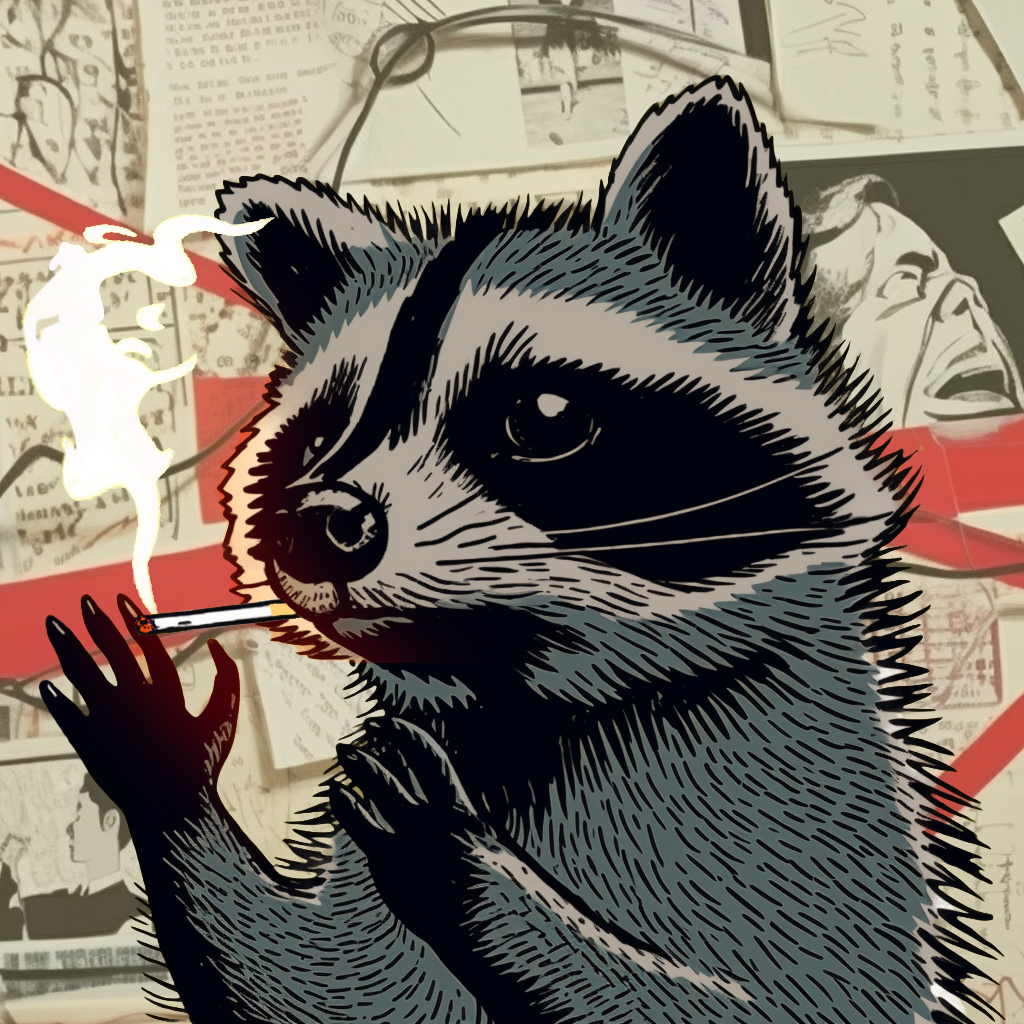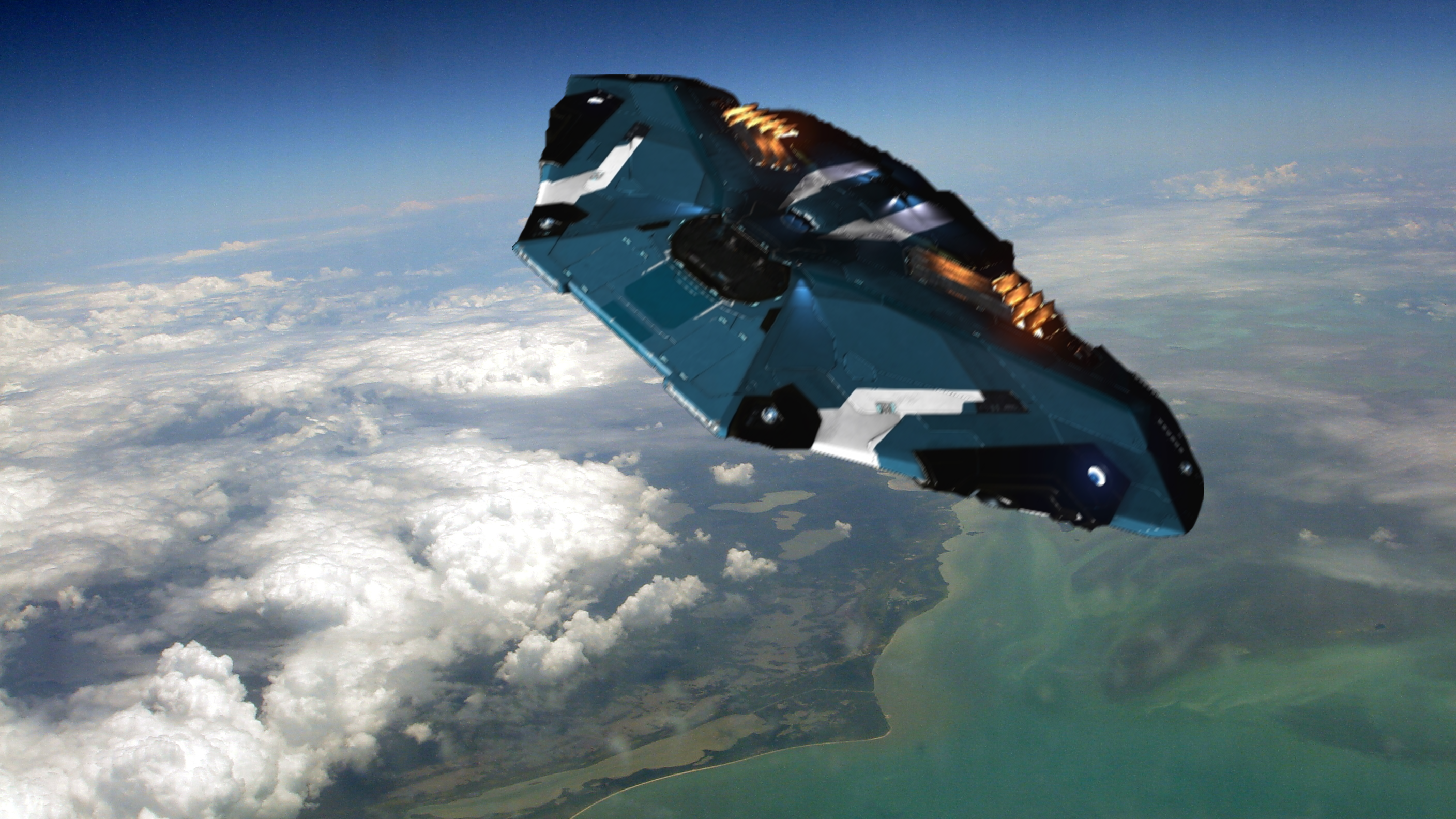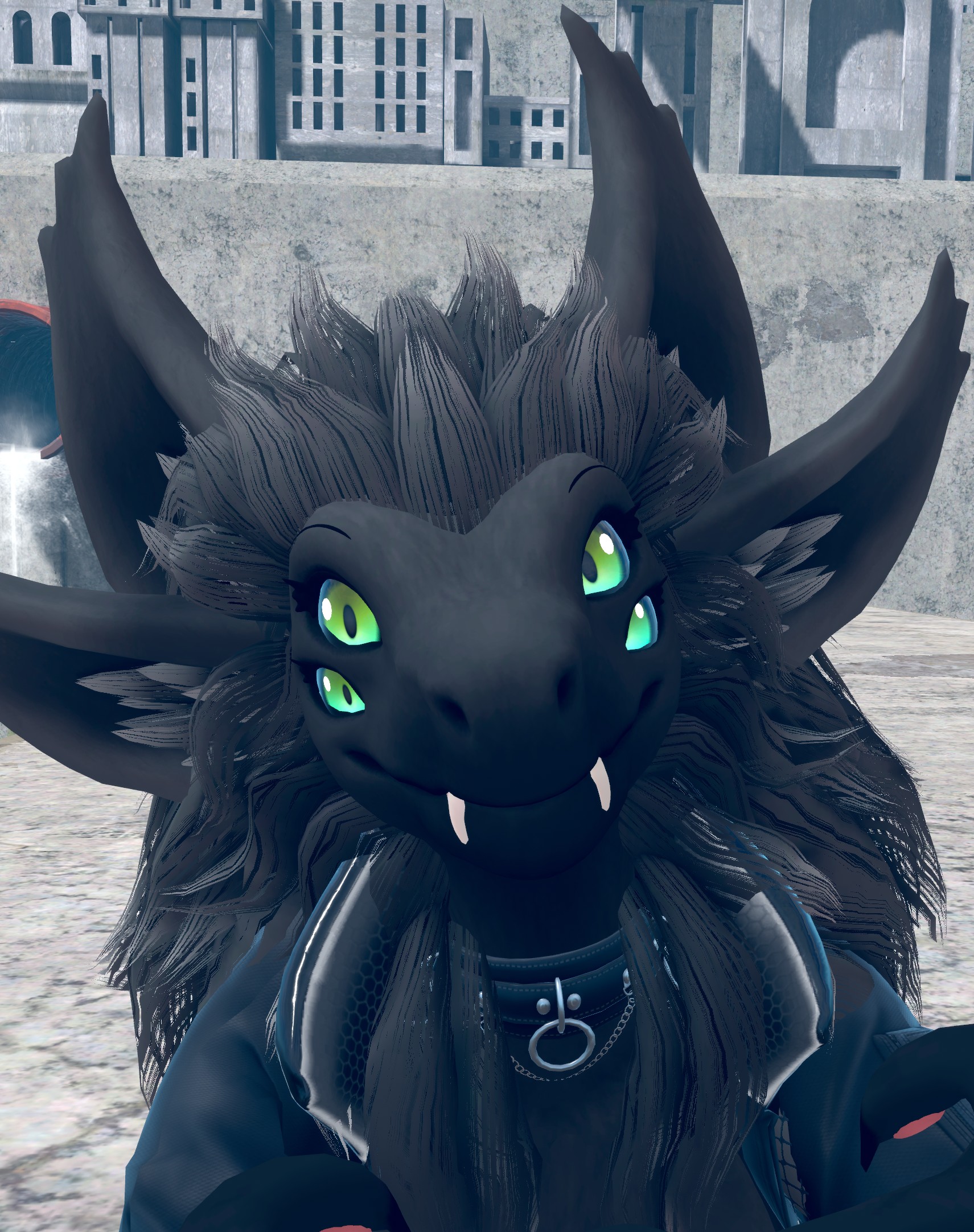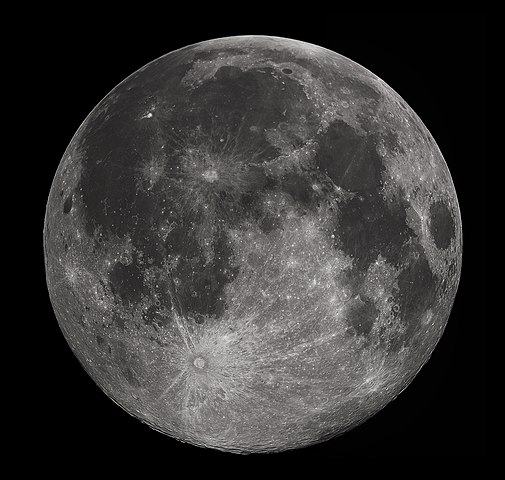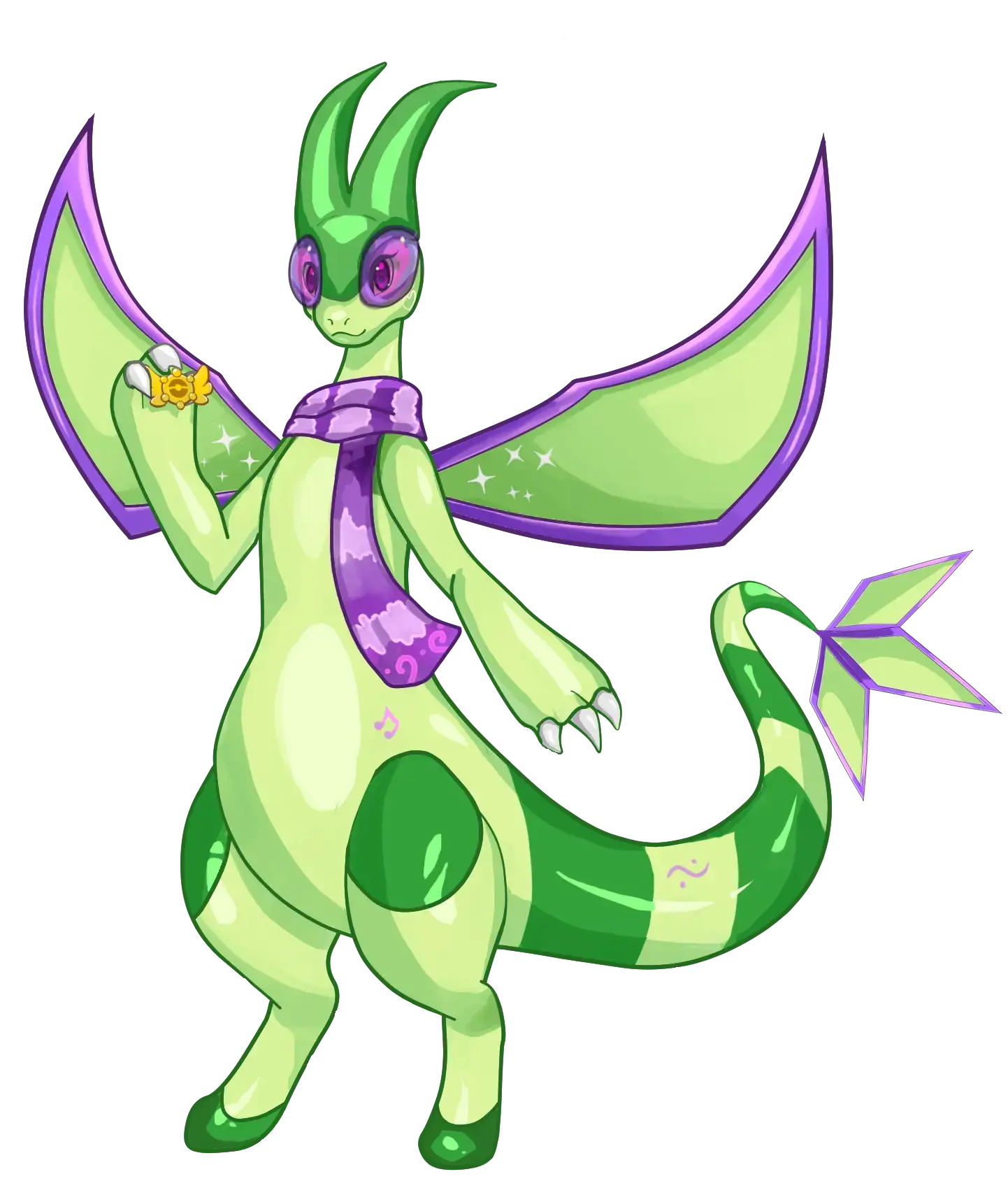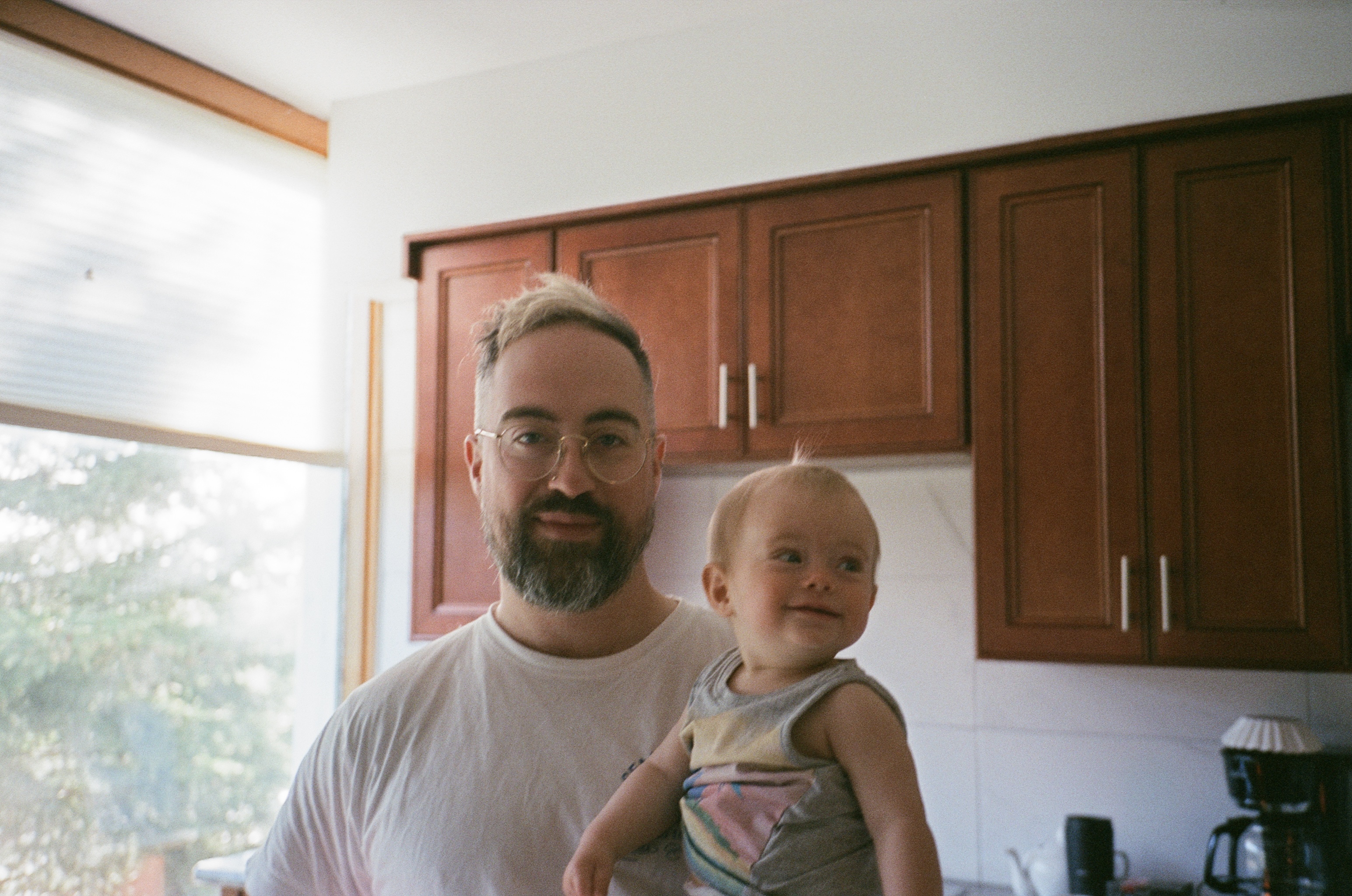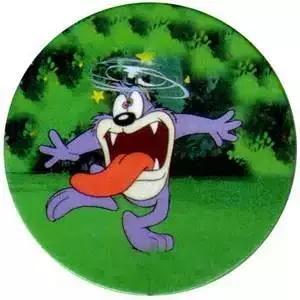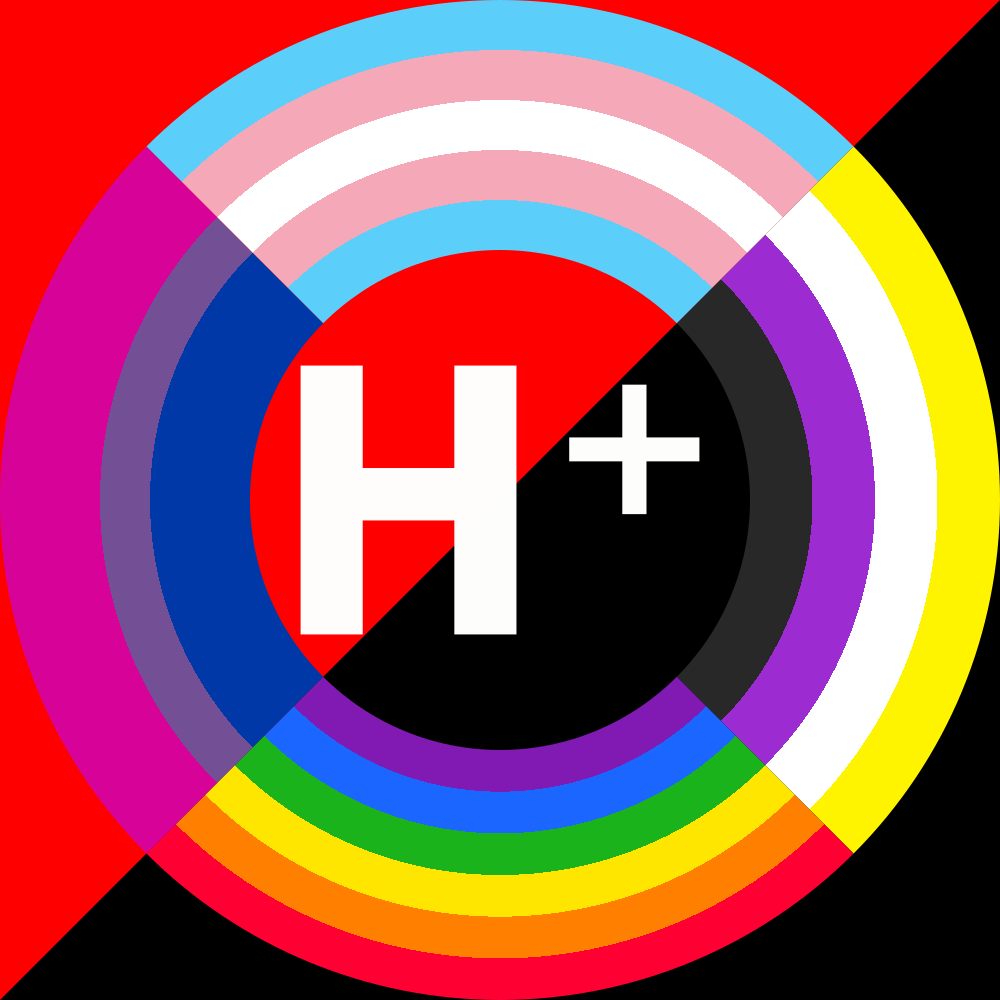Greg Rutkowski, a digital artist known for his surreal style, opposes AI art but his name and style have been frequently used by AI art generators without his consent. In response, Stable Diffusion removed his work from their dataset in version 2.0. However, the community has now created a tool to emulate Rutkowski’s style against his wishes using a LoRA model. While some argue this is unethical, others justify it since Rutkowski’s art has already been widely used in Stable Diffusion 1.5. The debate highlights the blurry line between innovation and infringement in the emerging field of AI art.
deleted by creator
Well said. Copyright is whatever, but the disrespect shown here is remarkable.
Yeah, all these people yelling about how people who use AI art generators are “thieves” who are “stealing” art and that the things they generate are “not really art” and so forth. Very disrespectful.
Just as quickly as people disregard the human art enjoyer, who now has access to a powerful tool to create art undreamed of a year ago.
I have found over the years that forums that claim to be about various forms of art are almost always really about the artists that make that art, and have little to no regard for the people who are there just for the art itself. The AI art thing is just the latest and most prominent way of revealing this.
What blurry line? An artist doesn’t what his art stolen from him. Seems pretty cut and dry to me.
I don’t disagree but stolen is a bit of a stretch
Nothing was stolen.
Drawing inspiration from someone else by looking at their work has been around for centuries.
Imagine if the Renaissance couldn’t happen because artists didn’t want their style stolen.
I don’t fully understand how this works, but if they’ve created a way to replicate his style that doesn’t involve using his art in the model, how is it problematic? I understand not wanting models to be trained using his art, but he doesn’t have exclusive rights to the art style, and if someone else can replicate it, what’s the problem?
This is an honest question, I don’t know enough about this topic to make a case for either side.
Do you know how they recreated his style? I couldn’t find such information or frankly have enough understanding to know how.
But if they either use his works directly or works created by another GAI with his name/style in the prompt, my personal feeling is that would still be unethical, especially if they charge money to generate his style of art without compensating him.
Plus, I find that the opt-out mentality really creepy and disrespectful
“If he contacts me asking for removal, I’ll remove this.” Lykon said. “At the moment I believe that having an accurate immortal depiction of his style is in everyone’s best interest.”
I still have trouble understanding the distinction between “a human consuming different artists, and replicating the style” vs “software consuming different artists, and replicating the style”.
there’s no distinction. people are just robophobic.
But if they either use his works directly or works created by another GAI with his name/style in the prompt, my personal feeling is that would still be unethical, especially if they charge money to generate his style of art without compensating him.
LORA’s are created on image datasets, but these images are just available anywhere. It’s really not much different from you taking every still of The Simpsons and using it. What I don’t understand is how these are seen as problematic because a majority of end users utilizing AI are doing it under fair use.
No one charges for LORA’s or models AFAIK. If they do, it hasn’t come across the Stable Diffusion discords I moderate.
People actually selling AI generated art is also a different story and that’s where it falls outside of fair use if the models being used contain copy-written work. It seems pretty cut and dry, artists complained about not being emulated by other artists before AI so it’s only reasonable that it happens again. If people are profiting off it, it should be at least giving compensation to the original artist (if it could be adjusted so that per-token payments are given as royalties to the artist). However, on the other hand think about The Simpsons, or Pokemon, or anything that has ever been sold as a sticker/poster/display item.
I’m gonna guess that a majority of people have no problem with that IP theft cause it’s a big company. Okay… so what if I love Greg but he doesn’t respond to my letters and e-mails begging him to commission him for a Pokemon Rutkowski piece? Under fair use there’s no reason I can’t create that on my own, and if that means creating a dataset of all of his paintings that I paid for to utilize it then it’s technically legal.
The only thing here that would be unethical or illegal is if his works are copywritten and being redistributed. They aren’t being redistributed and currently copy-written materials aren’t protected from being used in AI models, since the work done from AI can’t be copywritten. In other words, while it may be disrespectful to go against the artists wishes to not be used in AI, there’s no current grounds for it other than an artist not wanting to be copied… which is a tale as old as time.
TL;DR model and LORA makers aren’t charging, users can’t sell or copywrite AI works, and copywritten works aren’t protected from being used in AI models (currently). An artist not wanting to be used currently has no grounds other than making strikes against anything that is redistributing copies of their work. If someone is using this LORA to recreate Greg Rutkowski paintings and then proceeds to give or sell them then the artist is able to claim that there’s theft and damages… but the likelihood of an AI model being able to do this is low. The likelihood of someone selling these is higher, but from my understanding artistic styles are pretty much fair game anyway you swing it.
I understand wanting to protect artists. Artists also get overly defensive at times - I’m not saying that this guy is I actually am more on his side than my comment makes it out, especially after how he was treated in the discord I moderate. I’m more just pointing out that there’s a slippery slope both ways and the current state of U.S. law on it.
Generally speaking, the way training works is this:
You put together a folder of pictures, all the same size. It would’ve been 1024x1024 in this case. Other models have used 768z768 or 512x512. For every picture, you also have a text file with a description.The training software takes a picture, slices it into squares, generates a square the same size of random noise, then trains on how to change that noise into that square. It associates that training with tokens from the description that went with that picture. And it keeps doing this.
Then later, when someone types a prompt into the software, it tokenizes it, generates more random noise, and uses the denoising methods associated with the tokens you typed in. The pictures in the folder aren’t actually kept by it anywhere.
From the side of the person doing the training, it’s just put together the pictures and descriptions, set some settings, and let the training software do its work, though.
(No money involved in this one. One person trained it and plopped it on a website where people can download loras for free…)
Do you know how they recreated his style? I couldn’t find such information or frankly have enough understanding to know how.
I don’t, but another poster noted that it involves using his art to create the LoRA.
Plus, I find that the opt-out mentality really creepy and disrespectful
I don’t know about creepy and disrespectful, but it does feel like they’re saying “I know the artist doesn’t want me to do this, but if he doesn’t specifically ask me personally to stop, I’m going to do it anyway.”
they charge money to generate his style of art without compensating him.
That’s really the big thing, not just here but any material that’s been used to train on without permission or compensation. The difference is that most of it is so subtle it can’t be picked out, but an artist style is obviously a huge parameter since his name was being used to call out those particular training aspects during generations. It’s a bit hypocritical to say you aren’t stealing someone’s work when you stick his actual name in the prompt. It doesn’t really matter how many levels the art style has been laundered, it still originated from him.
It is unconditionally impossible to own an artistic style. “Stealing a style” cannot be done.
And yet the artist’s name is used to push the weights towards pictures in their style. I don’t know what the correct semantics are for it, nor the legalities. That’s part of the problem, the tech is ahead of our laws, as is usually the case.
And yet the artist’s name is used to push the weights towards pictures in their style.
That’s not even vaguely new in the world of art.
Imitating style is the core of what art is. It’s absolutely unconditionally protected by copyright law. It’s not even a .01 out of 10 on the scale of unethical. It’s what’s supposed to happen.
The law might not cover this yet, but any law that restricts the fundamental right to build off of the ideas of others that are the core of the entirety of human civilization is unadulterated evil. There is no part of that that could possibly be acceptable to own.
I totally agree with you on protecting the basics of creativity and growth. I think the core issue is using “imitate” here. Is that what the LLM is doing, or is that an anthropomorphism of some sense that there’s intelligence guiding the process? I know it seems like I’m nitpicking things to further my point, but the fact that this is an issue to many even outside artwork says there is a question here of what is and isn’t okay.
It’s only using his name because the person who created the LORA trained it with his name. They could have chosen any other word.
True, and then because it’s a black box there wouldn’t be a known issue at all. Or maybe it would be much less of an issue because the words might have blended others into the mix, and his style wouldn’t be as obvious in the outputs, and/or it would be easier to dismiss. Did the training involve actual input of his name, or was that pulled from the source trained on? How much control was in the training?
Just wait until you can copywrite a style. Guess who will end up owning all the styles.
Spoiler, it’s wealthy companies like Disney and Warner. Oh you used cross hatching? Disney owns the style now you theif.
Copyright is fucked. Has been since before the Mickey mouse protection act. Our economic system is fucked. People would rather fight each other and new tools instead of rallying against the actual problem, and it’s getting to me.
You’re right, copyright won’t fix it, copyright will just enable large companies to activate more of their work extract more from the creative space.
But who will benefit the most from AI? The artists seem to be getting screwed right now, and I’m pretty sure that Hasbro and Disney will love to cut costs and lay off artists as soon as this blows over.
Technology is capital, and in a capitalist system, that goes to benefit the holders of that capital. No matter how you cut it, laborers including artists are the ones who will get screwed.
Me, I’ll benefit the most. I’ve been using a locally running instance of the free and open source AI software Stable Diffusion to generate artwork for my D&D campaigns and they’ve never looked more beautiful!
Is drawing Mickey Mouse in a new pose copying the style or copying Mickey Mouse?
You said it yourself. You’re drawing Micky mouse in a new pose, so you’re copying Mickey mouse.
Drawing a cartoon in the style of Mickey mouse isn’t the same thing.
You can’t have a copyright on “big oversized smile, exaggerated posture, large facial features, oversized feet and hands, rounded contours and a smooth style of motion”.
The second.
I’m not sure how that’s relevant here, though. There is nothing at all being copied but an aesthetic.
There is nothing at all being copied but an aesthetic.
Although to me it is interesting that, even without literal copying, a generator might be capable of potentially emulating some key features of a specified source. Can this sometimes arguably extend beyond just “an aesthetic”? We’ve all seen examples similar to this one (from the SD online demo, default setting, with a familiar public-domain source) — https://i.imgur.com/PUJs3RL.png
His art was not “stolen.”
If I look at someone’s paintings, then paint something in a similar style did I steal their work? Or did I take inspiration from it?
Here’s my argument: tough titties. Everything Greg Rutkowski has ever drawn or made has been inspired by other things he has seen and the experiences of his life, and this applies to all of us. Indeed, one cannot usually have experiences without the participation of others. Everyone wants to think they are special, and of course we are to someone, but to everyone no one is special. Since all of our work is based upon the work of everyone who came before us, then all of our work belongs to everyone. So tough fucking titties, welcome to the world of computer science, control c and control v is heavily encouraged.
In that Beatles documentary, Paul McCartney said he thought that once you uttered the words into the microphone, it belonged to everyone. Little did he know how right he actually was.
You think there is a line between innovation and infringement? Wrong, They are the same thing.
And for the record, I’m fine with anyone stealing my art. They can even sell it as their own. Attribution is for the vain.
Greg wants to get paid, remove the threat of poverty from the loss of control and its a nonissue.
Not every human activity deserves compensation
Compensation shouldn’t be an aspect of most human activity.
But every human activity desirable to others deserve compensation. If you want someone to do something for you or make something for you or entertain you then it deserves compensation. The way ads on the internet have trained a lot of people to think that a lot of entertainment et cetera on the internet is free has been a negative for this. But at the same time that ad-supported model does make it more available to people that otherwise couldn’t afford the price of admission. It’s partly democratizing, but it’s also a scourge.
Even if that were true it wouldn’t apply to this situation. The man wants monopoly rights to his art style. That’s insane.
Has he said that no other humans could be inspired by his art style? If no then he hasn’t expressed a want for monopoly rights to his art style. But he has expressed that he doesn’t want computers to generate art explicitly to mimic his art style.
Also don’t make claims that are totally disconnected from the argument discussed. It’s dishonest discourse and serves as a way to brush aside the other argument. You didn’t make any counterargument to my argument and the point of this chain which came from you saying that “Not every human activity deserves compensation” as a reply to someone saying “Greg wants to get paid, remove the threat of poverty from the loss of control and its [sic] a nonissue.”
Your reply to me was inane.
If a company stole your art and copyrighted it such that it no longer belonged to everyone, in the same way that a Beatles record cannot be freely and openly shared, would you be fine with that?
You’re fine with someone stealing your art and selling it?
A sad fact but undeniable truth. I work in the industry. It’s standard for us to do mood boards. I have a lot hate relationship with them because it can be helpful to hone the design to a client’s liking and get your bearings. But, the fact it’s essentially what AI is doing by “borrowing” existing art as a reference. It’s the exact same thing. And that’s why I hate doing it. Because I don’t want to take someone’s button or background pattern.
Regardless of how I feel, I still can’t recognize AI as being “stealing” but industry accepted practices that do the exact same thing aren’t?
what I’m getting from all the AI stuff is the people in charge and the people that use it are scumbags
Pretty much. There are ways of using it that most artists would be okay with. Most of the people using it flat out refuse to use it like that though.
Edit: To expand on this:
Most artists would be okay with AI art being used as reference material, inspiration, assisting with fleshing out concepts (though you should use concept artists for that in a big production), rapid prototyping and whatnot. Most only care that the final product is at least mostly human-made.
Artists generally want you to actually put effort into what you’re making because, at the end of the day, typing a prompt into stable diffusion has more in common with receiving a free commission from an artist than it has with actually being an artist. If you’re going to claim that something AI had a hand in as being your art, then you need to have done the majority of the work on it yourself.
The most frustrating thing to me, however, is that there are places in art that AI could participate in which would send artists over the moon, but it’s not flashy so no one seems to be working on making AI in those areas.
Most of what I’m personally familiar with has to do with 3d modeling, and in that discipline, people would go nuts if you released an AI tool that could do the UV work for you. Messing with UVs can be very tedious and annoying, to the point where most artists will just use a tool using conventional algorithms to auto-unwrap and pack UVs, and then call it a day, even if they’re not great.
Another area is in rigging and weight painting. In order to animate a model, you have to rig it to a skeleton (unless you’re a masochist or trying to make a game accurate to late 90s-early 00s animation), paint the bone weights (which bones affect which polygons, and by how much), add constraints, etc. Most 3d modelers would leap at the prospect of having high-quality rigging and UVs done for them at the touch of a button. However, again, because it’s not flashy to the general public, no one’s put any effort into making an AI that can do that (afaik at least).
Finally, even if you do use an AI in ways that most artists would accept as valid, you’ll still have to prove it because there are so many people who put a prompt into stable diffusion, do some minor edits to fix hands (in older version), and then try to pass it off as their own work.
Sadly, AI isn’t as good with sparse data like vertices and bones, so most attempts to use AI on 3D stuff is via NERFs, which is closer to a “photo” you can walk around in than to an actual 3D scene.
Welcome to the wonderful world of the silicon valley tech era! Everything must be profitable at all costs! Everything must steal every tiny fact about you! Everything must include ! Everything must go through enshittification!
The real issue here is the transfer of power away from the artist. This artist has presumably spent years and years perfecting his craft. Those efforts are now being used to line someone else’s pockets, in return for no compensation and a diminishment in the financial value of his work, and, by the sounds of it, little say in the matter either. That to me seems very unethical.
Personally, as an artist who spends the vast majority of their time on private projects that aren’t paid, I feel like it’s put power in my hands. It’s best at sprucing up existing work and saving huge amounts of time detailing. Because of stable diffusion I’ll be able to add those nice little touches and flashy bits to my work that a large corporation with no real vision has at their disposal.
To me it makes it much easier for smaller artists to compete, leveling the playing field a bit between those with massive resources and those with modest resources. That can only be a good thing in the long run.
But I also feel like copyright more often than not rewards the greedy and stifles the creative.
But that’s sort of the nature of the beast when you put your content up for free on a public website. Does Kbin or Beehaw owe us money for our comments on this thread? What about everyone currently reading? At least KBin and Beehaw are making profit off of this.
The argument is not as clear cut as people are making it sound and it has potential to up-end some fundamental expectations around free websites and user-generated content. It’s going to affect far more than just AI.
At least KBin and Beehaw are making profit off of this.
How?
AI art is factually not art theft. It is creation of art in the same rough and inexact way that we humans do it; except computers and AIs do not run on meat-based hardware that has an extraordinary number of features and demands that are hardwired to ensure survival of the meat-based hardware. It doesn’t have our limitations; so it can create similar works in various styles very quickly.
Copyright on the other hand is, an entirely different and, a very sticky subject. By default, “All Rights Are Reserved” is something that usually is protected by these laws. These laws however, are not grounded in modern times. They are grounded in the past; before the information age truly began it’s upswing.
Fair use generally encompasses all usage of information that is one or more of the following:
- Educational; so long as it is taught as a part of a recognized class and within curriculum.
- Informational; so long as it is being distributed to inform the public about valid, reasonable public interests. This is far broader than some would like; but it is legal.
- Transformative; so long as the content is being modified in a substantial enough manner that it is an entirely new work that is not easily confused for the original. This too, is far broader than some would like; but it still is legal.
- Narrative or Commentary purposes; so long as you’re not copying a significant amount of the whole content and passing it off as your own. Short clips with narration and lots of commentary interwoven between them is typically protected. Copyright is not intended to be used to silence free speech. This also tends to include satire; as long as it doesn’t tread into defamation territory.
- Reasonable, ‘Non-Profit Seeking or Motivated’ Personal Use; People are generally allowed to share things amongst themselves and their friends and other acquaintances. Reasonable backup copies, loaning of copies, and even reproduction and presentation of things are generally considered fair use.
In most cases AI art is at least somewhat Transformative. It may be too complex for us to explain it simply; but the AI is basically a virtual brain that can, without error or certain human faults, ingest image information and make decisions based on input given to it in order to give a desired output.
Arguably; if I have license or right to view artwork; or this right is no longer reserved, but is granted to the public through the use of the World Wide Web…then the AI also has those rights. Yes. The AI has license to view, and learn from your artwork. It just so happens to be a little more efficient at learning and remembering than humans can be at times.
This does not stop you from banning AIs from viewing all of your future works. Communicating that fact with all who interact with your works is probably going to make you a pretty unpopular person. However; rightsholders do not hold or reserve the right to revoke rights that they have previously given. Once that genie is out of the bottle; it’s out…unless you’ve got firm enough contract proof to show that someone agreed to otherwise handle the management of rights.
In some cases; that proof exists. Good luck in court. In most cases however; that proof does not exist in a manner that is solid enough to please the court. A lot of the time; we tend to exchange, transfer and reserve rights ephemerally…that is in a manner that is not strictly always 100% recognized by the law.
Gee; Perhaps we should change that; and encourage the reasonable adaptation and growth of Copyright to fairly address the challenges of the information age.
deleted by creator
Rutowski, Monet, and Rockwell could also not create without human art.
All creativity is a combination of past creativity.
Even Monet.
Even Shakespeare.
Even Beethoven.
deleted by creator
Actually. It is necessary. The process of creativity is much much more a synergy of past consumption than we think.
It took 100,000 years to get from cave drawings to Leonard Da Vinci.
Yes we always find ways to draw, but the pinnacle of art comes from a shared culture of centuries.
It doesn’t change anything you said about copyright law, but current-gen AI is absolutely not “a virtual brain” that creates “art in the same rough and inexact way that we humans do it.” What you are describing is called Artificial General Intelligence, and it simply does not exist yet.
Today’s large language models (like ChatGPT) and diffusion models (like Stable Diffusion) are statistics machines. They copy down a huge amount of example material, process it, and use it to calculate the most statistically probable next word (or pixel), with a little noise thrown in so they don’t make the same thing twice. This is why ChatGPT is so bad at math and Stable Diffusion is so bad at counting fingers – they are not making any rational decisions about what they spit out. They’re not striving to make the correct answer. They’re just producing the most statistically average output given the input.
Current-gen AI isn’t just viewing art, it’s storing a digital copy of it on a hard drive. It doesn’t create, it interpolates. In order to imitate a person’t style, it must make a copy of that person’s work; describing the style in words is insufficient. If human artists (and by extension, art teachers) lose their jobs, AI training sets stagnate, and everything they produce becomes repetitive and derivative.
None of this matters to copyright law, but it matters to how we as a society respond. We do not want art itself to become a lost art.
Current-gen AI isn’t just viewing art, it’s storing a digital copy of it on a hard drive.
This is factually untrue. For example, Stable Diffusion models are in the range of 2GB to 8GB, trained on a set of 5.85 billion images. If it was storing the images, that would allow approximately 1 byte for each image, and there are only 256 possibilities for a single byte. Images are downloaded as part of training the model, but they’re eventually “destroyed”; the model doesn’t contain them at all, and it doesn’t need to refer back to them to generate new images.
It’s absolutely true that the training process requires downloading and storing images, but the product of training is a model that doesn’t contain any of the original images.
None of that is to say that there is absolutely no valid copyright claim, but it seems like either option is pretty bad, long term. AI generated content is going to put a lot of people out of work and result in a lot of money for a few rich people, based off of the work of others who aren’t getting a cut. That’s bad.
But the converse, where we say that copyright is maintained even if a work is only stored as weights in a neural network is also pretty bad; you’re going to have a very hard time defining that in such a way that it doesn’t cover the way humans store information and integrate it to create new art. That’s also bad. I’m pretty sure that nobody who creates art wants to have to pay Disney a cut because one time you looked at some images they own.
The best you’re likely to do in that situation is say it’s ok if a human does it, but not a computer. But that still hits a lot of stumbling blocks around definitions, especially where computers are used to create art constantly. And if we ever hit the point where digital consciousness is possible, that adds a whole host of civil rights issues.
It’s absolutely true that the training process requires downloading and storing images
This is the process I was referring to when I said it makes copies. We’re on the same page there.
I don’t know what the solution to the problem is, and I doubt I’m the right person to propose one. I don’t think copyright law applies here, but I’m certainly not arguing that copyright should be expanded to include the statistical matrices used in LLMs and DPMs. I suppose plagiarism law might apply for copying a specific style, but that’s not the argument I’m trying to make, either.
The argument I’m trying to make is that while it might be true that artificial minds should have the same rights as human minds, the LLMs and DPMs of today absolutely aren’t artificial minds. Allowing them to run amok as if they were is not just unfair to living artists… it could deal irreparable damage to our culture because those LLMs and DPMs of today cannot take up the mantle of the artists they hedge out or pass down their knowledge to the next generation.
Thanks for clarifying. There are a lot of misconceptions about how this technology works, and I think it’s worth making sure that everyone in these thorny conversations has the right information.
I completely agree with your larger point about culture; to the best of my knowledge we haven’t seen any real ability to innovate, because the current models are built to replicate the form and structure of what they’ve seen before. They’re getting extremely good at combining those elements, but they can’t really create anything new without a person involved. There’s a risk of significant stagnation if we leave art to the machines, especially since we’re already seeing issues with new models including the output of existing models in their training data. I don’t know how likely that is; I think it’s much more likely that we see these tools used to replace humans for more mundane, “boring” tasks, not really creative work.
And you’re absolutely right that these are not artificial minds; the language models remind me of a quote from David Langford in his short story Answering Machine: “It’s so very hard to realize something that talks is not intelligent.” But we are getting to the point where the question of “how will we know” isn’t purely theoretical anymore.
-
How do you know human brains don’t work in roughly the same way chatbots and image generators work?
-
What is art? And what does it mean for it to become “lost”?
He literally just explained why.
No, he just said AI isn’t like human brains because its a “statistical machine”. What I’m asking is how he knows that human brains aren’t statistical machines?
Human brains aren’t that good at direct math calculation either!
Also he definitely didn’t explain what “lost art” is.
-
This is a very nice and thorough comment! Can you provide a reputable source for these points? (no criticism intended: as you seem knowledgeable, I’d trust you could have such reputable sources already selected and at hand, that’s why I’m asking).
Not the poster you’re replying to, but I’m assuming you’re looking for some sort of source that neural networks generate stuff, rather than plagiarize?
Google scholar is a good place to start. You’d need a general understanding of how NNs work, but it ends up leading to papers like this one, which I picked out because it has neat pictures as examples. https://arxiv.org/abs/1611.02200
What this one is doing is taking an input in the form of a face, and turning it into a cartoon. They call it an emoji, cause it’s based on that style, but it’s the same principle as how AI art is generated. Learn a style, then take a prompt (image or text) and do something with the prompt in the style.
Re: Stolen. Not stolen comments Copyright law as interpreted judges is still being worked out on AI. Stay tuned if it’s defined as stolen or not. But even if the courts decide existing copyright law would define training on artists work as legitimate use. The law can change and it still could swing the way of the artist if congress got involved.
My personal opinion, which may not reflect what happens legally is I hope we all get more control over our data and how it’s used and sold. Wether that’s my personal data like my comments, location or my artistic data like my paintings. I think that would be a better world
Copyright law as interpreted judges is still being worked out on AI. Stay tuned if it’s defined as stolen or not.
You just contradicted yourself in two sentences. Copyright and theft are not the same thing. They are unrelated to each other. When you violate copyright you are not “stealing” anything. This art is not “stolen”, full stop.
The “nothing of value was lost when you pirate” argument. I’m a game developer who fully encourages people to pirate my games (or email me if they can’t afford my games and want a free Steam key) but I can tell you value is lost when people pirate content. Even if that’s simply a positive Steam review which in turn will put you higher up on placements on Steam’s algorithm which will gain you more sales. Something of value is lost when you pirate. It’s on the artist to determine if that value is acceptable to be lost. If they made their art for the sake of humanity or if they made art for the sake of survival in our shitty capitalistic society.
So sorry, yes, something is lost and it’s because of capitalism. I’d argue otherwise if it didn’t mean someone didn’t get to eat or pay rent. I pirated a lot of media back in my day when I couldn’t afford that media. I used to tell myself I wouldn’t have likely bought those things anyways. That I wasn’t taking from someone. In reality, I would have waited for a sale and gotten that media for 5 dollars. 5 dollars is still a lot of money when selling something though. If I just gave you 5 dollars you could do something small but nice for yourself. You could go buy a lot of things with that sale money. Just because you aren’t spending 60 dollars on it doesn’t mean you would never buy it. The fact that you want to play it says you’d probably buy it. Maybe you’d refund it. Maybe you wouldn’t. Your time is worth something to you though. Thus when you pirate something you are committing something of value from yourself to search, download and ingest that media.
So how does this deal with copyright theft? Stealing something and using it devalues the original product. You’ve seen it a dozen times for better or worse. Minecraft is a great example of how it got devalued for a while there when everyone made Minecraft clones. My kid told me the other day that he got Minecraft on his tablet for free. It was some terrible knockoff he had been playing. I explained this and asked if he wanted the real thing. He said yes and I went and bought Minecraft. That in itself is proof that value is being lost by even legally taking an idea and copying it. A kid’s parent who didn’t know better would have just been like “Hmm, that’s great, have fun.” The best point I can make is that if there was one video game ever, to play a video game you would have to buy that one game. That one game would have more sales than any single game out there today. Clearly, something of value is being created by the exclusivity of copyright.
There is, of course, a balance. What is copyrightable? What stifles creativity and innovation? I would say if these AI artists were able to recreate the style from prompts and only train the AI on images that it has the authority to distribute (public domain images, CC0, etc.) then it’s fair game. Training AI on copyrighted materials and then distributing derived works is copyright theft and should be deemed as such.
Copying art for personal, non-commercial use is not theft, but copying someone’s art and then profiting (using their image without permission to enrich yourself) is theft.
No.
- Copying someone’s art without permission is copyright violation, not theft.
- These AIs aren’t copying anyone’s art, so it’s not even copyright violation.
That’s your opinion. The contrary opinion would be that copyright infringement is the theft of intellectual property, which many people view as of equal substantiality to physical property.
You can disagree with the concept of intellectual property but clearly there’s an alternative to your point of view that you can’t just dismiss by declaration.
Take your opinion to a court of law and see how far it gets. They actually pay close attention to what words mean there. If copyright violation was theft why do they have two different sets of laws to deal with them?
I’m sure you’re aware that the manner in which legal bureaucracies define terms is a form of jargon that differentiates legal language from actual language.
They have separate categories of laws to deal with them because physical property is different than intellectual property. The same reason they use a different category of law to deal with identity theft.
“Is copyright infringement theft” is something that had been debated for as long as mp3s were a thing. This is an old argument with lots of material on both sides scattered across the web. I clearly fall on the side of copyright infringement is theft and theft is stealing.
There’s absolutely no debate, legal or otherwise.
Theft, by definition, requires you to deprive someone of something. That simply cannot happen when you copy stuff. That’s why it’s called copyright infringement and not theft.
You can only steal art by physically stealing an art piece - then and only then it’s theft.
😀 just want to note theres a call out to this debate in the Wikipedia page on copyright infringement. I promise I didn’t add that paragraph there. https://en.wikipedia.org/wiki/Copyright_infringement

What do you mean there is no debate? You’re debating it right now.
Plenty of artists view it as theft when people take their work and use it for their own ends without their permission. Not everyone, sure. But it’s a bit odd to state so emphatically that there is no debate.
All this proves to me, based on the context from this post, is that people are willing to commit copyright infringement in order to make a machine produce art in a specific style.
It doesn’t say anywhere they used copyrighted art though?
Seems the new model might use art inspired by him, not his art itself.
It’s a moral gray zone. If you add enough freely available works inspired by someone, the model can produce a similar style without using any original works.
Is it still copyright infringement at that point?
Its unlikely that this did not use his work, these models require input data. Even if they took similar art, that would only resolve the issue of Greg himself but would shift it to those other artists. Unless there is some sort of unspoken artistic genealogical purity that prevents artists with similar or inspired styles from having equal claim on their own creations when inspired by another.
It also could be outputs generated from another AI model. But I don’t think people who see ethical problems in this care about the number of steps removed and processing that occurs when the origin is his artwork and it ultimately outputs the same or similar style. The result is what bothers people, no matter how disparate or disconnected the source’s influence is. If the models had simply found the Greg Rutkowski latent space through random chance people would still take issue with it.
The ability and willingness to generate images in a style associated with a person, without consent, is a threat to that persons job security and shows a lack of value for them as a human. As if their creative expression is worth nothing but as a commodity to be consumed.
The people supporting this don’t care though. They want to consume this person’s style in far greater quantities and variations then a human is capable or willing to fulfill. That’s why these debates are so fierce, the two sides have incentives that are in direct conflict with one another.
We currently lack the economic ingenuity or willingness to create a system that will satisfy both parties. The barrier of entry to AI is low, someone at home has every incentive to maintain the status quo or even actively rail against artists. Artists will need a heavy handed approach from the government or as a collective to combat this effectively.
It also could be outputs generated from another AI model.
This is an interesting point, and you get into some real Ship of Theseus territory. At what point is it no longer based on his work? How many iterations before he no longer has any claim to it at all?
Its certainly interesting, but its ultimately going to be wherever we collectively decide.
One thing modern ML advancements have made painfully clear is that something being the “same” is variable based on what definition you use to determine sameness. Is it the same crew, same look, same feel, same atoms, same purpose, same name, etc… In the absence of such definition, everything ceases to be the same the moment after it has been described. As every single thing is constantly changing.
Living things naturally generalize similarities, relationships, and associations into patterns that are re-used and abstracted. So we very much take these things for granted.
If you like that type of thing you may enjoy Funes the Memorious by Luis Borges
If it’s inspired then at that point I guess it might not be copyright infringing unless it’s an accurate enough recreation of a copyrighted piece… And it looks like my mind filled in the gaps to assume it was copyrighted work being used.
my take on the subject, as someone who worked both in design and arts, and tech, is that the difficulty in discussing this is more rooted on what is art as opposed to what is theft
we mistakingly call illustrator/design work as art work. art is hard to define, but most would agree it requires some level of expressiveness that emanates from the artist (from the condition of the human existence, to social criticism, to beauty by itself) and that’s what makes it valuable. with SD and other AIs, the control of this aspect is actually in the hands of the AI illustrator (or artist?)
whereas design and illustration are associated with product development and market. while they can contain art in a way, they have to adhere to a specific pipeline that is generally (if not always) for profit. to deliver the best-looking imagery for a given purpose in the shortest time possible
designers and illustrators were always bound to be replaced one way or a another, as the system is always aiming to maximize profit (much like the now old discussions between taxis and uber). they have all the rights to whine about it, but my guess is that this won’t save their jobs. they will have to adopt it as a very powerful tool in their workflow or change careers
on the other hand, artists that are worried, if they think the worth of their art lies solely in a specific style they’ve developed, they are in for an epiphany. they might soon realise they aren’t really artists, but freelance illustrators. that’s also not to mention other posts stating that we always climb on the shoulders of past masters - in all areas
both artists and illustrators that embrace this tool will benefit from it, either to express themselves quicker and skipping fine arts school or to deliver in a pace compatible with the market
all that being said I would love to live in a society where people cared more about progress instead of money. imagine artists and designers actively contributing to this tech instead of wasting time talking fighting over IP and copyright…
If an image is represented as a network of weighted values describing subtle patterns in the image rather than a traditional grid of pixel color values, is that copy of the image still subject to copyright law?
How much would you have to change before it isn’t? Or if you merged it with another representation, would that change your rights to that image?
It doesn’t matter how you recreate an image, if you recreate someone else’s work that is a violation of copyright.
Stealing someone’s style is a different matter.
if you recreate someone else’s work that is a violation of copyright.
Only if the work is copyrighted, and your copy does not constitute fair use…
I could create a faithful reproduction of the Mona Lisa (or… I mean, someone could, I sure couldn’t), and it’s not violating copyright, because the Mona Lisa is not copyrighted.
I could create a faithful reproduction of the Mona Lisa
You could, but Stable Diffusion couldn’t. All it can do is output what it’s been fed. It doesn’t know composition, or colour theory. It doesn’t understand that something is a human, or a fabric, or how materials work, it just reproduces variations of what it’s been fed. Calling it “intelligence” is disingenuous: it doesn’t “know” anything, it just reproduces what’s built into it’s database, usually without the artist’s permission.
There’s a lot of disagreement here on what is theft, what is art, what is copyright… etc
The main issue people have with AI is fundamentally how is it going to be used? I know there isnt much we can do about it now, and its a shame because there it has so much potential good. Everyone defending AI is making a lot of valid points.
But at the end of the day it is a tool that is going to be misused by the rich and powerful to eliminate hundreds of millions of well paying careers, permanently. MOST well paying jobs in fact, not just artists. What the hell are people supposed to do? How is any of this a good thing?
What the hell are people supposed to do?
Eat the rich :)
More concretely, there are a number of smaller and larger sociopolitical changes that can be fought for. On the smaller side, there’s rethinking the way our society values people and pushing for some kind of UBI, on the larger side there’s shifting to postcapitalist economics and organisation to various degrees .)
But the rich are the ones buying a lot of the art! Who will pay the artists if you eat the people with the money?
While some argue this is unethical, others justify it since Rutkowski’s art has already been widely used in Stable Diffusion 1.5.
What kind of argument is that supposed to be? We’ve stolen his art before so it’s fine? Dickheads. This whole AI thing is already sketchy enough, at least respect the artists that explicitly want their art to be excluded.
His art was not “stolen.” That’s not an accurate word to describe this process with.
It’s not so much that “it was done before so it’s fine now” as “it’s a well-understood part of many peoples’ workflows” that can be used to justify it. As well as the view that there was nothing wrong with doing it the first time, so what’s wrong with doing it a second time?
Yes, it was.
One human artist can, over a life time, learn from a few artists to inform their style.
These AI setups are telling ALL the art from ALL the artists and using them as part of a for profit business.
There is no ethical stance for letting billion dollar tech firms hoover up all the art ever created to the try and remix it for profit.
No, it wasn’t. Theft is a well-defined word. When you steal something you take it away from them so that they don’t have it any more.
It wasn’t even a case of copyright violation, because no copies of any of Rutkowski’s art were made. The model does not contain a copy of any of the training data (with an asterisk for the case of overfitting, which is very rare and which trainers do their best to avoid). The art it produces in Rutkowski’s style is also not a copyright violation because you can’t copyright a style.
There is no ethical stance for letting billion dollar tech firms hoover up all the art ever created to the try and remix it for profit.
So how about the open-source models? Or in this specific instance, the guy who made a LoRA for mimicking Rutkowski’s style, since he did it free of charge and released it for anyone to use?
Yes copies were made. The files were downloaded, one way or another (even as a hash, or whatever digital asset they claim to translate them into) then fed to their machines.
If I go into a Ford plant, take pictures of their equipment, then use those to make my own machines, it’s still IP theft, even if I didn’t walk out with the machine.
Make all the excuses you want, you’re supporting the theft of other people’s life’s work then trying to claim it’s ethical.
Yes copies were made. The files were downloaded, one way or another (even as a hash, or whatever digital asset they claim to translate them into) then fed to their machines.
They were put on the Internet for that very purpose. When you visit a website and view an image there a copy of it is made in your computer’s memory. If that’s a copyright violation then everyone’s equally boned. When you click this link you’re doing exactly the same thing.
Here is where a rhethorical sleight of hand is used by AI proponents.
It’s displayed for people’s appreciation. AI is not people, it is a tool. It’s not entitled to the same rights as people, and the model it creates based on artists works is itself a derivative work.
Even among AI proponents, few believe that the AI itself is an autonomous being who ought to have rights over their own artworks, least of all the AI creators.
By that logic I can sell anything I download from the web while also claiming credit for it, right?
Downloading to view != downloading to fuel my business.
No, and that’s such a ridiculous leap of logic that I can’t come up with anything else to say except no. Just no. What gave you that idea?
pirating photoshop is a well-understood part of many peoples’ workflows. that doesn’t make it legal or condoned by adobe
I don’t know what this has to do with anything. Nothing was “pirated”, either.
i’m not making a moral comment on anything, including piracy. i’m saying “but it’s part of my established workflow” is not an excuse for something morally wrong.
only click here if you understand analogy and hyperbole
if i say “i can’t write without kicking a few babies first”, it’s not an excuse to keep kicking babies. i just have to stop writing, or maybe find another workflow
The difference is that kicking babies is illegal whereas training and running an AI is not. Kind of a big difference.
did you click the thing saying that you understand analogies?
You’re using an analogy as the basis for an argument. That’s not what analogies are for. Analogies are useful explanatory tools, but only within a limited domain. Kicking a baby is not the same as creating an artwork, so there are areas in which they don’t map to each other.
You can’t dodge flaws in your argument by adding a “don’t respond unless you agree with me” clause on your comment.



